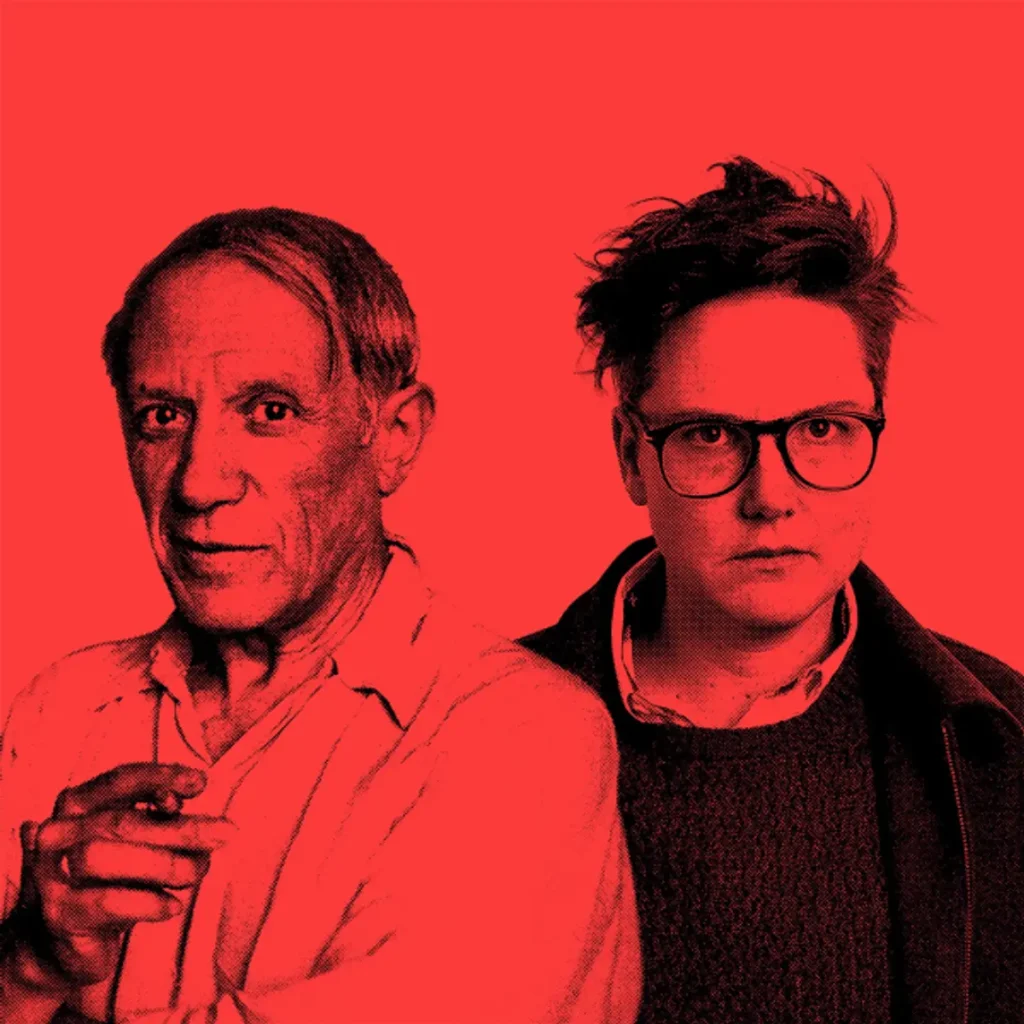Tsuktiben Jamir
This year marks Pablo Picasso’s (1881–1973) 50th death anniversary. One of the most significant artists of the 20th century, he revolutionised the field of art with his creative approaches. Picasso, who was born in Spain, had a prolific career spanning a variety of creative movements, from the Cubist movement he co-founded through his early Blue and Rose eras. His capacity for self-reinvention led to a remarkable collection of work that is distinguished by daring experimentation, disjointed shapes, and brilliant colours. Picasso’s extraordinary brilliance and unrelenting innovation not only influenced the development of contemporary art but also permanently altered society, establishing him as a genuine visionary and aesthetic genius. But how often can one separate the art from the artist?
‘It’s Pablo-matic: Picasso According to Hannah Gadsby’ is an exhibition curated by Australian comedian Hannah Gadsby at the Brooklyn Museum. According to Brooklyn Museum, the exhibition “examines the artist’s complicated legacy through a critical, contemporary, and feminist lens, even as it acknowledges his work’s transformative power and lasting influence.”
This is not the first time the comedian has dabbled in art. In fact, Hannah Gadsby is well known for her ground-breaking 2018 comedy show Nanette, which exposed the reprehensible actions of some of the most important artists in art history, including Picasso. ‘It’s Pablo-matic’ presents over one hundred works, through in-gallery juxtaposition and includes an audio tour that features Gadsby’s biting humour and scathing criticism.
Hannah describes Picasso as a “monumentally misogynistic and abusive domestic authoritarian dictator.” On being a part of the show, Hannah says that “Picasso is not my muse of choice.” Perhaps this encapsulates the whole essence of the show.
The pieces in the exhibition will include some of Picasso’s own works, alongside a carefully curated array of creations by pioneering women artists of the twentieth and twenty-first centuries, such as Ana Mendieta, Joan Semmel, Cecily Brown, Mickalene Thomas, May Stevens, Käthe Kollwitz, Marilyn Minter, Kiki Smith, Dindga McCannon, and Renee Cox.
Feminist artists, curators, and art historians have started to rewrite the narrative in the 50 years following Picasso’s passing. They have questioned the predominately masculine narratives of modernism, the definition of “genius,” the value of individual conduct, and the reception of complicated historical individuals like Picasso today.
Regarding the exhibition, The Art Newspaper writes, “Since the Brooklyn Museum is the only art museum in the US with a feminist centre, it wasn’t lost on us that Picasso’s death in 1973 coincided with the paradigm-shifting emergence of the second wave of feminism and the entry of women into every corner of the art world.”
Therefore, it seems like the ideal time to examine Picasso’s legacy through a feminist lens and incorporate the perspectives of some of the most important female artists that have arisen in the years after Picasso’s passing. The show also explores Picasso’s treatment of women, a topic that is well-documented yet nonetheless provoking.
While ArtNews writes that the exhibition “aspires toward a new kind of Picasso scholarship that better accounts for his misogyny, his bad behaviour, and his colonialist impulses. Gadsby and the curators intend to accomplish this by weaving in more recent works by pillars of feminist art.”
Collaborating with the brilliant Hannah Gadsby, this remarkable exhibition is a result of the collective vision of several accomplished women curators, including Lisa Small, Senior Curator of European Art; Talia Shiroma, Curatorial Assistant for Arts of the Americas and Europe at the Brooklyn Museum; Catherine Morris, Sackler Senior Curator at the Elizabeth A. Sackler Center for Feminist Art.
Curated jointly by the Brooklyn Museum and the Musée National Picasso-Paris, this exhibition stands as a significant component within a worldwide series of exhibitions and events commemorating the fiftieth anniversary of Pablo Picasso’s passing:
Picasso Celebration 1973-2023: 50 exhibitions and events to celebrate Picasso.





